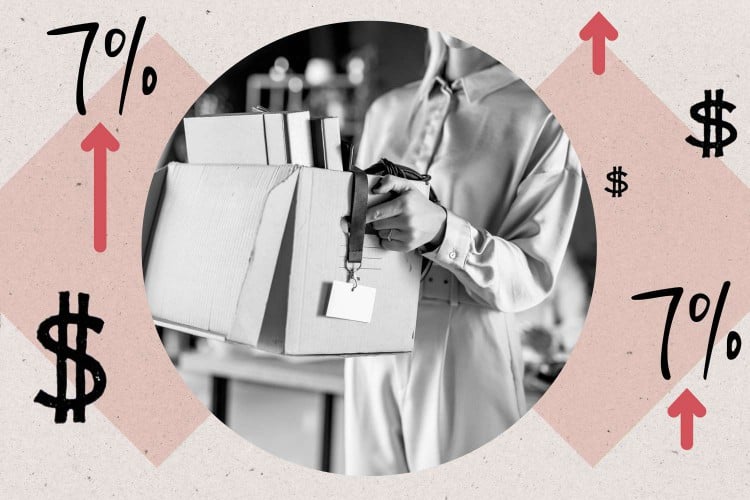
Tara Moore / Getty Images
Shrinkflation is when a company reduces a product’s size while keeping its price the same, leaving you to pay the same amount for less. This usually occurs when there is high inflation.
Definition and Examples of Shrinkflation
Shrinkflation refers to the reduction of a package’s contents as a result of high inflation. Rather than raising the price of their products, manufacturers choose to decrease the quantity provided in each package. You pay the same price yet get less of the product, while manufacturers save money on rising supply costs.
You can see if a product is experiencing shrinkflation by comparing the price and size over time. For example, Charmin previously sold 396 sheets of two-ply Ultra Soft toilet paper for the same price as it sold a pack of 366 sheets of two-ply Ultra Soft toilet paper in July 2022.
Note
Bread, cereal, personal care products, confectionary products, and beverages are common items that recently have experienced shrinkflation.
You may think that shrinkflation is a deceptive or unfair practice, but it is not illegal as long as a business is not being deceptive or engaging in unfair practices. Agencies within each U.S. state oversee weights and measurements of products, enforce item pricing laws and unit pricing regulations, and ensure price markings are accurate. Business decisions to raise prices or decrease the quantity of their packages have to abide by state consumer and business laws.
How Does Shrinkflation Work?
Manufacturers can raise the prices on their products or decrease the contents based on an assessment of demand and supply for their products.
If consumers are particularly sensitive to the prices of their products, then manufacturers know there is an elastic demand for their goods. In that case, manufacturers may not want to risk raising their prices and losing customers. Instead, manufacturers may choose to decrease the quantity of the contents of their products.
Note
Manufacturers are required by law to disclose the weight and quantity of their product, so they cannot hide shrinking product information. However, businesses hope you are less attentive to quantity changes than you are to price.
One of the reasons why a manufacturer may need to decrease the quantity of their contents is because input costs have risen. Some common business inputs are fuel, lumber, transportation, rent, and labor. In addition, intermediate food-item prices may have increased, which makes it more expensive for manufacturers who use that food item in making their final goods. By shrinking a product’s contents, businesses can also reduce their production and packaging costs.
Whether a business raises the price or shrinks the contents of its product, you end up paying the price for inflation. You either pay more for the same amount of product or pay the same for less. For example, if a product was previously $10 and had a weight of 10 ounces, but now it has a weight of 8 ounces, the product would have decreased in size by 20%. The per-ounce cost previously was $1 per ounce and now is $1.25 per ounce. This decrease in quantity by 20% is equivalent to a 25% increase in price.
How Do You Navigate Shrinkflation?
Since many manufacturers are shrinking their products while others are raising prices, the best way you can compare products is to compare the cost per ounce of the product (the unit price). This allows you to more easily compare the cost between products and package sizes. You could also compare the price per serving to better understand costs across items.
Note
When comparing unit prices, such as how much something is per ounce, make sure the unit price on each item is the same. For example, one unit price might be per ounce while the other item is priced per full package weight.
Another way to navigate shrinkflation is to buy goods that have less packaging. Eggs, apples, and lettuce are less susceptible to shrinkage in the short term. Shopping at a store that sells products in large quantities may be beneficial as there is less packaging on bulk items than those found at a typical grocery store.
Key Takeaways
- Shrinkflation occurs when a company offers less of a product for the same price.
- Shrinkflation is common among staples such as bread, cereal, beauty care products, and confectionary items.
- Much like when a business increases its prices, shrinkflation is a symptom of larger inflationary pressures.
Want to read more content like this? Sign up for The Balance’s newsletter for daily insights, analysis, and financial tips, all delivered straight to your inbox every morning!


